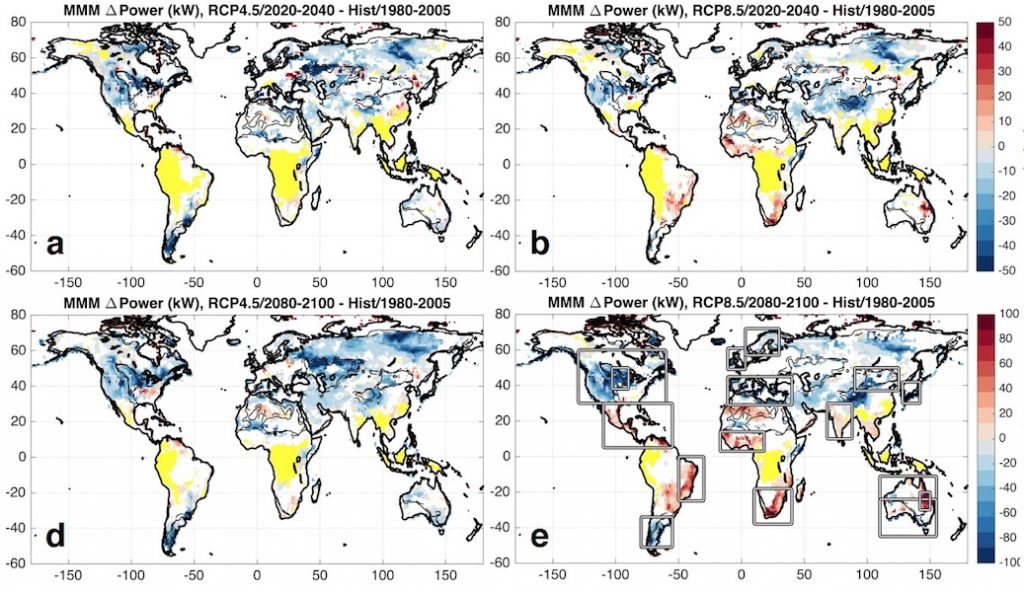
Features
Energy & Power
Renewables
Ever think about moving your wind farm? You may have to!
December 12, 2017 | By Anthony Capkun
 Potential global windpower in the coming years. Top images represent the next 40 years, while the bottom images represent next 80. Left images represent lower emissions; right images represent higher emissions scenario. Red areas are windpower hotspots, blue areas are reductions. White areas are uncertain. Image: Kris Karnauskas/CIRES.
Potential global windpower in the coming years. Top images represent the next 40 years, while the bottom images represent next 80. Left images represent lower emissions; right images represent higher emissions scenario. Red areas are windpower hotspots, blue areas are reductions. White areas are uncertain. Image: Kris Karnauskas/CIRES. December 12, 2017 – Wind energy developers beware! A recently published study by University of Colorado Boulder researchers finds wind resources may decrease in many regions of the Northern Hemisphere in the next century, and could sharply increase in some regions down south.
“There’s been a lot of research looking at the potential climate impact of energy production transformations—like shifting away from fossil fuels toward renewables,” says lead author Kris Karnauskas. “But not as much focuses on the impact of climate change on energy production by weather-dependent renewables, like wind energy.”
Windpower currently feeds about 3.7% of worldwide energy demand, but its contribution is growing. Karnauskas and colleagues Julie Lundquist and Lei Zhang wanted to better understand likely shifts in production, so they turned to an international set of climate model outputs to assess changes in wind energy resources across the globe.
The team then used a “power curve” from the wind energy industry to convert predictions of global winds, density and temperature into an estimate of wind energy production potential.
While not all of the climate models agreed on what the future will bring, substantial changes may be in store, especially a prominent asymmetry in windpower potential across the globe. If carbon dioxide emissions continue at high levels, windpower resources may decrease in the Northern Hemisphere’s mid-latitudes, and increase in the Southern Hemisphere and tropics by 2100.
The team also found that if emission levels are mitigated, dropping lower in coming decades, they see only a reduction of windpower in the north that may not be countered with an increase of power in the south.
Renewable energy decision-makers plan and install wind farms in areas with reliable winds. For example, the prairies of the American Midwest—persistently windy today and in recent decades—are dotted with tens of thousands of turbines. While the new assessment finds windpower production in these regions over the next 20 years will be similar to that of today, it could drop by the end of the century.
— With files from CIRES.
IMAGE: Potential global windpower in the coming years. Top images represent the next 40 years, while the bottom images represent next 80. Left images represent lower emissions; right images represent higher emissions scenario. Red areas are windpower hotspots, blue areas are reductions. White areas are uncertain. Image: Kris Karnauskas/CIRES.
Print this page